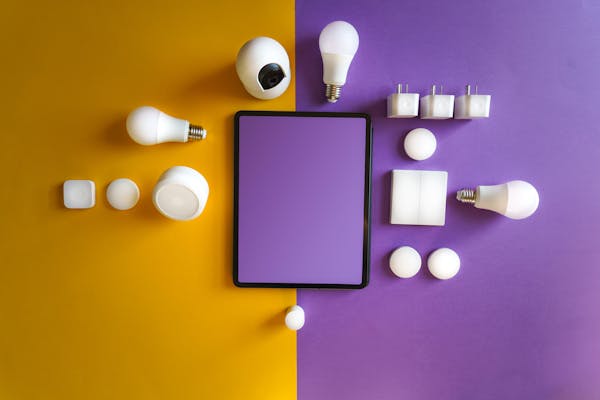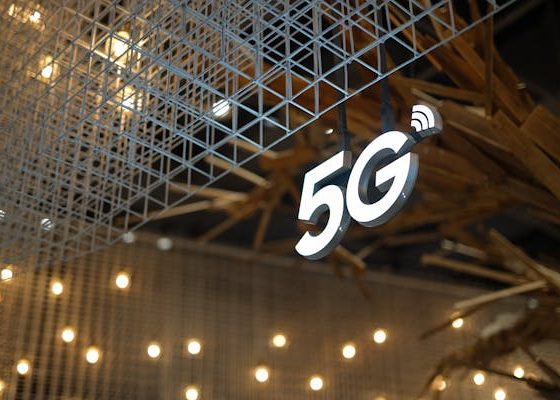
The Internet of Things (IoT) is transforming the way we interact with the world, connecting everyday objects to the internet and enabling them to communicate and share data. This technological revolution is reshaping industries, enhancing convenience, and opening new possibilities for innovation. In this article, we’ll explore what is the Internet of Things, its history, applications, challenges, and future prospects.
What is the Internet of Things?
At its core, the Internet of Things refers to a network of physical objects—often called “smart devices”—embedded with sensors, software, and other technologies to connect and exchange data with other devices and systems over the internet. The concept extends to a wide range of devices, from household appliances and wearable gadgets to industrial machinery and vehicles. The defining feature of IoT devices is their ability to collect, transmit, and act on data, often without human intervention.
The Evolution of IoT
The idea of connected devices isn’t new; it dates back to the early 1980s with the creation of an internet-connected Coca-Cola vending machine at Carnegie Mellon University. However, the term “Internet of Things” was coined in 1999 by Kevin Ashton, a British technology pioneer, during his work at Procter & Gamble. Ashton used the term to describe a system where the internet is connected to the physical world via ubiquitous sensors.
The development of IoT has been driven by advancements in various fields, including:
- Sensor Technology: The miniaturization and affordability of sensors have made it possible to embed them in a wide array of objects.
- Wireless Communication: The proliferation of wireless technologies like Wi-Fi, Bluetooth, and cellular networks has enabled devices to communicate seamlessly.
- Cloud Computing: The rise of cloud computing has provided the necessary infrastructure for storing and processing vast amounts of data generated by IoT devices.
- Data Analytics: Advances in data analytics and machine learning allow for the extraction of valuable insights from the data collected by IoT devices.
Key Components of IoT
To understand what is the Internet of Things, it’s essential to recognize the critical components that make up an IoT ecosystem:
- Sensors and Actuators: Sensors collect data from the environment, such as temperature, humidity, motion, or light. Actuators can perform actions based on the data received, like turning on a light or adjusting a thermostat.
- Connectivity: IoT devices need to communicate with each other and with central systems. This communication can occur via various means, including Wi-Fi, Bluetooth, Zigbee, and cellular networks.
- Data Processing: Once data is collected, it must be processed. This can happen locally on the device (edge computing) or in the cloud.
- User Interface: IoT systems often include user interfaces, such as smartphone apps or web dashboards, that allow users to interact with the system and receive information.
Applications of IoT
The applications of IoT are vast and span across various industries, transforming how businesses operate and how people live. Here are some key areas where IoT is making a significant impact:
Smart Homes
One of the most visible applications of IoT is in smart homes. Smart home devices, such as thermostats, lights, locks, and security cameras, can be controlled remotely through a smartphone app or voice commands. For example, a smart thermostat can learn a user’s schedule and preferences, adjusting the temperature accordingly to optimize comfort and energy savings. Smart security systems can send alerts to homeowners when unusual activity is detected, enhancing home security.
Healthcare
In healthcare, IoT is revolutionizing patient care and medical services. Wearable devices, such as fitness trackers and smartwatches, monitor vital signs and physical activity, providing users and healthcare professionals with valuable health data. Remote patient monitoring systems allow doctors to track patients’ health conditions from afar, reducing the need for frequent hospital visits. IoT devices can also improve the management of chronic diseases by providing real-time data on patient health, enabling timely interventions.
Industrial IoT (IIoT)
The Industrial Internet of Things (IIoT) refers to the application of IoT in industrial settings, such as manufacturing, energy, and transportation. IIoT enables predictive maintenance, where sensors on machinery can detect potential failures before they occur, reducing downtime and maintenance costs. In manufacturing, IIoT can optimize production processes by monitoring and adjusting equipment in real-time. In the energy sector, smart grids use IoT technology to balance supply and demand, enhancing energy efficiency.
Smart Cities
Smart city initiatives leverage IoT to improve urban living by optimizing resources and services. IoT-enabled traffic management systems can monitor traffic flow and adjust signals to reduce congestion. Smart lighting systems can dim or brighten streetlights based on the time of day or weather conditions, saving energy. IoT sensors can also monitor air quality, noise levels, and waste management, helping cities address environmental challenges.
Agriculture
In agriculture, IoT is transforming traditional farming practices into precision agriculture. IoT devices, such as soil moisture sensors and weather stations, provide real-time data on soil conditions and climate, allowing farmers to make informed decisions about irrigation, fertilization, and pest control. Drones equipped with cameras and sensors can monitor crop health and identify areas that need attention. These technologies help farmers optimize resource use, increase crop yields, and reduce environmental impact.
Retail
Retailers are using IoT to enhance the shopping experience and streamline operations. Smart shelves can detect when inventory is low and automatically reorder products. IoT beacons can send personalized offers and recommendations to customers’ smartphones based on their location within the store. In logistics, IoT devices can track the movement of goods in real-time, improving supply chain visibility and efficiency.
Challenges and Concerns
While the benefits of IoT are vast, the technology also presents several challenges and concerns that must be addressed:
Security and Privacy
Security is one of the most significant concerns surrounding IoT. The vast number of connected devices increases the attack surface for cybercriminals. Weak security measures can lead to data breaches, unauthorized access, and even the control of critical infrastructure. Ensuring robust security protocols and regular updates for IoT devices is crucial to mitigating these risks.
Privacy is another critical issue. IoT devices often collect sensitive data about individuals, such as health information, location, and personal habits. There is a need for clear regulations and standards to protect user data and ensure that it is used ethically and transparently.
Interoperability
The IoT ecosystem includes a wide range of devices from different manufacturers, each using different communication protocols and standards. This lack of standardization can lead to interoperability issues, making it challenging for devices to communicate with each other. Efforts are being made to establish common standards and protocols, but achieving seamless interoperability remains a challenge.
Scalability
As the number of IoT devices continues to grow, scalability becomes a significant concern. Managing and processing the vast amounts of data generated by these devices requires robust infrastructure and efficient data management solutions. Additionally, network bandwidth and power consumption are critical factors that need to be addressed to support the scalability of IoT systems.
Data Management and Analysis
The volume of data generated by IoT devices can be overwhelming. Storing, processing, and analyzing this data to extract meaningful insights requires advanced data analytics and machine learning techniques. Organizations must invest in data management and analytics infrastructure to harness the full potential of IoT.
The Future of IoT
The future of IoT is promising, with continuous advancements in technology and increasing adoption across industries. Here are some trends and developments to watch for in the coming years:
5G and Edge Computing
The rollout of 5G networks will significantly enhance the capabilities of IoT devices by providing faster, more reliable, and low-latency connections. This will enable real-time data processing and support applications that require high bandwidth, such as autonomous vehicles and augmented reality.
Edge computing, which involves processing data closer to the source rather than in a centralized cloud, will become increasingly important. By reducing the need to send data to the cloud for processing, edge computing can reduce latency and improve the efficiency of IoT systems. This is particularly crucial for applications that require real-time decision-making, such as industrial automation and healthcare.
Artificial Intelligence and Machine Learning
Artificial intelligence (AI) and machine learning (ML) will play a critical role in the future of IoT. These technologies can analyze the vast amounts of data generated by IoT devices, identify patterns, and make predictions. For example, AI-powered analytics can optimize energy consumption in smart buildings or predict equipment failures in industrial settings. The integration of AI and IoT, often referred to as AIoT, will unlock new levels of automation and intelligence.
IoT in Healthcare
The healthcare sector will continue to be a significant beneficiary of IoT advancements. The COVID-19 pandemic has accelerated the adoption of telemedicine and remote patient monitoring, highlighting the potential of IoT in healthcare. In the future, IoT devices will become more sophisticated, offering more accurate and comprehensive health monitoring. Wearable devices will become more capable, tracking a wider range of health metrics, and even providing early warning signs for diseases.
Smart Cities and Sustainability
As urbanization continues to grow, smart city initiatives will become increasingly important for managing resources and improving the quality of life for residents. IoT will play a crucial role in making cities more sustainable by optimizing energy use, reducing waste, and improving transportation systems. Smart infrastructure, such as intelligent street lighting and smart grids, will become more prevalent, contributing to environmental sustainability and cost savings.
Consumer IoT
The consumer IoT market will continue to expand, with more smart home devices, wearables, and connected appliances becoming available. These devices will become more integrated and user-friendly, offering seamless experiences for consumers. Voice assistants like Amazon Alexa and Google Assistant will become even more central to the smart home ecosystem, allowing for more natural and intuitive interactions with IoT devices.
Conclusion
The Internet of Things is a transformative technology that is reshaping our world in profound ways. By connecting physical objects to the internet and enabling them to communicate and share data, IoT is revolutionizing industries, enhancing daily life, and opening new avenues for innovation. As we continue to explore what is the Internet of Things, it becomes clear that the potential applications are vast and varied, from smart homes and healthcare to industrial automation and smart cities.
However, with this potential comes the need to address challenges such as security, privacy, interoperability, and data management. As technology continues to evolve, it is essential to establish robust standards, regulations, and best practices to ensure the safe and ethical deployment of IoT.
Looking ahead, the future of IoT is bright, with advancements in 5G, edge computing, AI, and machine learning set to unlock new possibilities. As these technologies converge, we can expect IoT to become even more integral to our daily lives, driving innovation, improving efficiency, and contributing to a more connected and intelligent world.



